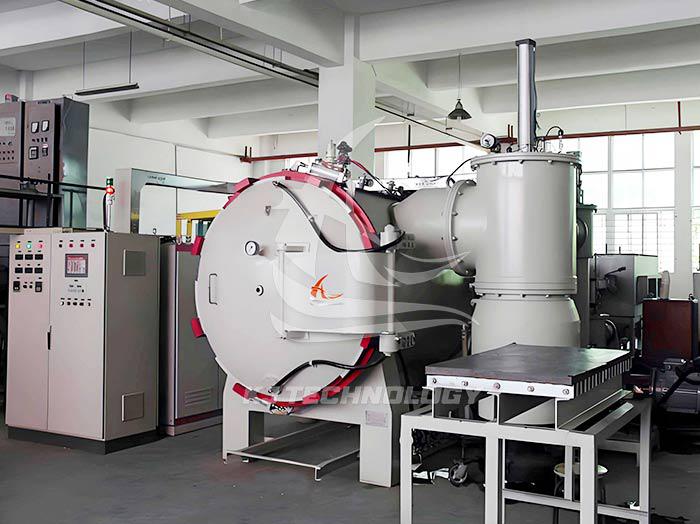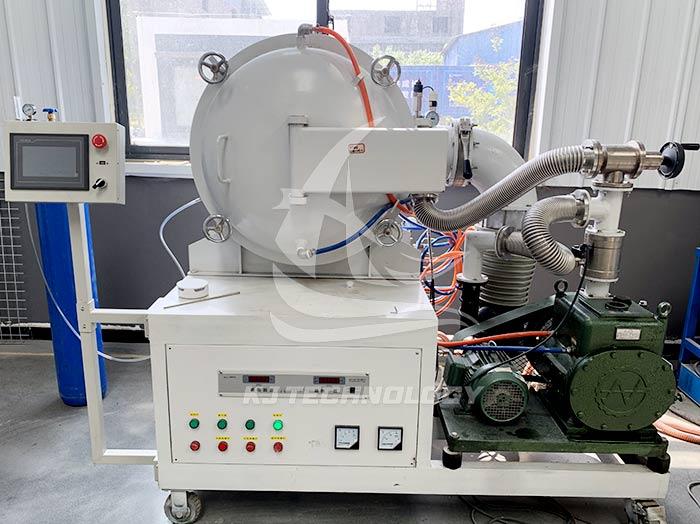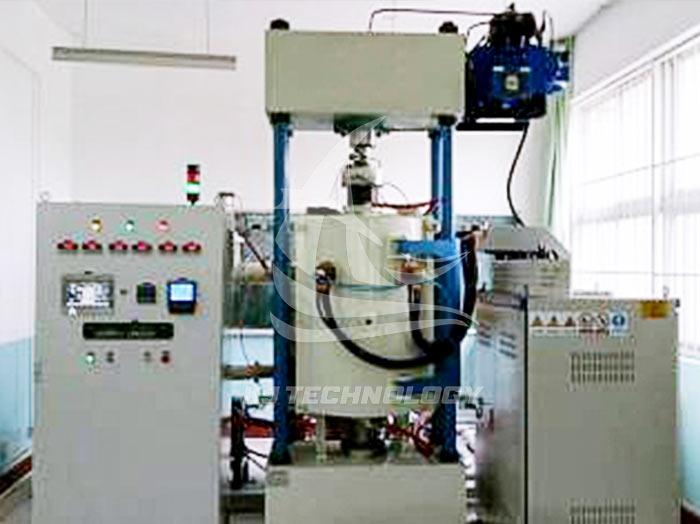Can a vacuum graphite high-temperature furnace be filled with gas?
 11-06-2025 Author: KJ technology
11-06-2025 Author: KJ technology
The vacuum graphite high-temperature furnace can pass gas, and this function is one of the key characteristics for achieving high-precision heat treatment. The following is a detailed analysis of gas flow in vacuum graphite high-temperature furnaces:
1. The purpose and advantages of gas communication
Create a protective or reactive atmosphere
Inert gas protection: Inert gases such as argon (Ar) and nitrogen (N ₂) are introduced to replace the vacuum environment and prevent the workpiece from oxidizing or generating harmful reaction products at high temperatures. This is crucial for easily oxidizable materials such as titanium alloys and stainless steel, or workpieces that require high surface purity such as semiconductors and optical components.
Reactive atmosphere treatment: Introducing reducing gases such as hydrogen (H ₂) and carbon monoxide (CO) can achieve reduction reactions (such as removing oxide layers on metal surfaces) or surface treatment processes such as carburizing and nitriding, improving material properties.
Flexible control of heat treatment environment
According to the process requirements, it can switch between vacuum, inert gas, or reactive gas to meet diverse heat treatment needs (such as annealing, quenching, carburizing, etc.).
Improve process efficiency and quality
Inert gases can accelerate the cooling process (such as gas quenching) and shorten the production cycle.
Reactive gases can achieve specific surface modifications, enhancing material hardness, wear resistance, or corrosion resistance.
2. Implementation method of gas passage
Gas injection system
Gas circuit design: The furnace body is equipped with independent gas injection pipelines, connected to high-purity gas sources (such as argon cylinders and hydrogen generators).
Flow control: Accurately control the gas flow rate (such as 0-5 L/min) through a mass flow meter (MFC) to ensure atmosphere stability.
Mixed gas support: Some high-end models support the mixing of multiple gases (such as Ar+H ₂), and the mixing ratio can be adjusted through a proportional valve to meet complex process requirements.
Vacuum and gas switching
Vacuum pump set: equipped with mechanical pumps, molecular pumps and other vacuum equipment, can quickly evacuate to the ultimate vacuum degree (such as 5 × 10 ⁻⁶ mbar).
Inflatable valve group: Control gas filling through solenoid valves or manual valves to achieve seamless switching between vacuum and gas environments.
Pressure monitoring: The built-in pressure sensor monitors the pressure inside the furnace in real time to ensure that the gas environment meets the process requirements.
Security protection design
Explosion proof device: equipped with explosion-proof valves, leak detection sensors, and automatic shut-off functions for flammable gases such as hydrogen.
Ventilation system: Exhaust ports are installed around the furnace and connected to the ventilation system of the factory to prevent gas accumulation and potential safety hazards.
Operation permissions: Set gas operation permissions through PLC or upper computer software to avoid accidents caused by misoperation.
3. Typical application scenarios
Inert gas protected annealing
Application case: Annealing stainless steel parts (such as automotive exhaust system components), introducing argon gas to prevent oxidation and maintain surface smoothness.
Process parameters: temperature of 850 ℃, argon flow rate of 2 L/min, cooling with furnace after 2 hours of insulation.
Restorative atmosphere treatment
Application case: Remove the oxide layer on the surface of titanium alloy and reduce it with hydrogen gas at 900 ℃.
Process effect: The thickness of the oxide layer is reduced, and the surface roughness is smaller.
Carburizing/nitriding treatment
Application case: Gear surface carburizing is achieved by introducing a mixture of propane (C ∝ H ₈) and nitrogen (N ₂) gas to achieve a 0.8-1.2mm carburizing layer at 950 ℃.
Process advantages: Compared to traditional salt bath carburizing, gas carburizing is pollution-free and has more precise carbon potential control.
Rapid cooling (air-cooled quenching)
Application case: High speed steel cutting tools are quenched, and high-pressure nitrogen gas (0.6 MPa) is introduced to achieve rapid cooling and higher hardness.
Efficiency improvement: The cooling time has been shortened from 30 minutes for oil quenching to 5 minutes, reducing the risk of deformation.
4. Operation precautions
Gas purity: Use high-purity gas (such as 99.999% Ar) to avoid impurities contaminating the workpiece or damaging the furnace body.
Flow control: Adjust the gas flow rate according to process requirements to avoid pressure fluctuations in the furnace caused by excessive flow or protection effects caused by insufficient flow.
Safe operation:
Hydrogen operation must strictly comply with explosion-proof regulations and stay away from fire sources.
Before inflation, ensure that the vacuum level inside the furnace meets the standard to prevent gas mixing from causing danger.
Regularly check the sealing of the air circuit to prevent leakage.
Process matching: Select appropriate gas types and parameters (such as temperature, time, flow rate) based on material type and process objectives.








